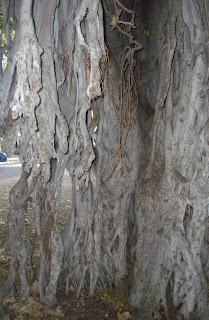
On Thursday we went to the Art of the Brick exhibition.There were some amazing sculptures. Youngest son was a little disappointed at first as he saw it initially as more about art than Lego and he was hoping to score ideas for future projects. However once he started looking without expectations , like his brother, he found it incredible.
A bit of background about the artist: Nathan Sawaya was the sort of kid who by the sound of it, was always thinking up things to do. He wrote stories, drew cartoons, performed magic tricks and also... played with LEGO.
Nathan qualified as a corporate lawyer but found when he wanted to relax or just have fun he got more out of scrambling about on the floor with Lego.
I guess his creative spirit was bigger than his desire to work at law but he refound Lego as a medium for sculpture.

According to journalist Scott Jones,
“Sawaya is a surrealist
mash-up of
forms and artists. Imagine Frank Lloyd Wright crossed with Ray
Harryhausen, or Auguste Rodin crossed with Shigeru Miyamoto, and you
start to get a sense of where Sawaya is coming from.”
A life-size human form sculpture typically takes 2-3 weeks depending on complexity. Nathan makes plans of his work with graph paper before he begins.
He says Lego appeals to him because it is a clean medium to work with.He also like how the sharp lines and corners of a model blur into pleasing curves when one stands back to view it.
And a brief bio about Lego: The name 'LEGO' is an abbreviation of the two Danish words "leg godt", meaning "play well".It was founded way back in 1932 by Ole Kirk Kristiansen.and a grandson of the founder still owns the company.(now that's one family business that worked well!!)
Apparently the founder was a pretty creative guy and as a carpenter made many different toys. His most popular was blocks made of wood. These developed into the plastic blocks of today.

The bricks, originally manufactured from cellolose acetate
were a development of traditional stackable wooden blocks that locked
together by means of several round studs on top and a hollow rectangular
bottom. The blocks snapped together, but not so tightly that they
required extraordinary effort to be separated.
Annual production of Lego bricks averages approximately 36 billion per
year, or about 1140 elements per second. If all the Lego bricks ever
produced were to be divided equally among a world population of six billion, each person would have 62 Lego bricks!
















































